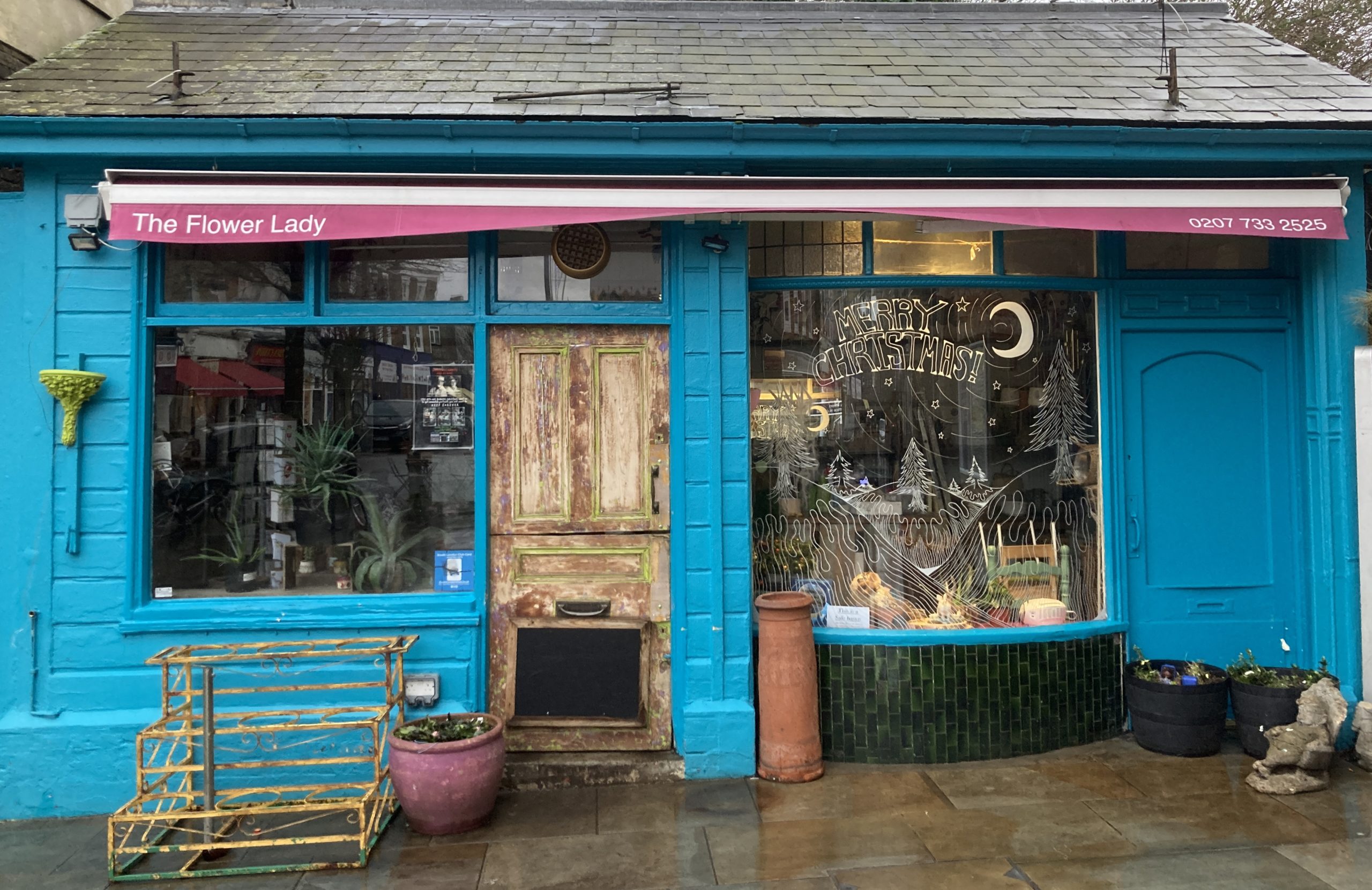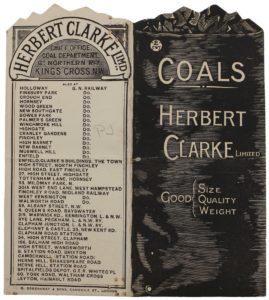This shop is currently home to The Flower Lady.
Today it is a flower shop, but it was for many years a coal merchant’s office.
Whether the building standing on this site today is the very same that stood there in 1880, the first mention in a directory, is open to question. It is clear that there was always only a single-storey small building here.
The first recorded shop dates from 1880, when the name Herbert Clarke, coal merchant, appears. He and later his company, Herbert Clarke Ltd, had the shop for more than 25 years. Herbert Clarke (1816-1888) was a very successful man of business of the Victorian era. He was born in Streatham, the son of Frederick Clarke, one of seven children. An older brother was Seymour Clarke (1814-1876), a successful civil engineer who worked with Brunel on the Great Western Railway and the Clifton and Hungerford Suspension bridges. So it seems likely that Herbert Clarke also started his career with the railways. This would account for Herbert Clarke being recorded in the 1851 census as being in Plymouth. It could also account for his marrying a woman from the Exeter area, Letitia Luscombe (born c.1821), probably in Totnes in 1856.
By 1861 Herbert Clarke was living at 12 Regent’s Park Terrace, a very respectable address overlooking Regent’s Park, and by 1871 at 86 Regent’s Park Terrace. This would have made him a near neighbour of Friedrich Engels, who in 1870-94 was living at 122 Regent’s Park Terrace. An English Heritage Blue Plaque records this. Most residents seen to have been professional men and their families: lawyers, accountants and the like. It seems Herbert Clarke retired, or did not remain active on a day to day basis with the company, because by 1881 he is living with his wife in a house called “Woodfield” in the village of Lustleigh, Devon, today in the Dartmoor National Park. He seems to have lived quite modestly, employing two domestic servants, though probably also a coachman in a separate dwelling.
Herbert Clarke died on 29 October 1888 in Lustleigh and was buried in the graveyard of the village church of St John the Baptist. He and his wife had no children. He left the substantial sum of £157,336 – many millions in today’s terms – which was distributed among a large number of nephews and nieces.
Herbert Clarke was one of the major coal merchants of his time, with offices in many London locations, as the advertisement in the form of a coal sack shows.
The head office was at King’s Cross, the terminus of the Great Northern Railway. Coal is closely associated with the railways, not only because steam trains ran on coal but because trains transported coal around the country, at that time the principal source of energy. Hence there were many sidings with coal depots. At Herne Hill there were such on Shakespeare Road, as is mentioned in the Herbert Clarke advert. It would seem the office next to the station (like other coal merchants’ offices on Railton Road) was one where customers would come to order coal, pay bills etc. Coal was not stored on the premises. There were several coal merchants with offices in Station Square in the Victorian/Edwardian era.
Herbert Clarke’s father Frederick Clarke (born 1788) is recorded in the probate register as dying on 12 November 1880, and “formerly resident at Iffley Lodge, Herne Hill, but lately 13 Hanover Terrace, Notting Hill”. Iffley Lodge became No. 8 Herne Hill when street numbering was introduced (demolished c.1900). He left the sum of £22,000. Iffley Lodge was for a time in the 1890s the home of music hall star Marie Loftus.
The shop that is today The Flower Lady, run by Elaine Partleton, remained a coal merchant’s office until well after World War II and is recorded as such as late as 1969.
It is estimated that at the end of the 19th century Londoners were burning five million tons of coal each year, with another three million burned by the companies that produced gas. Distribution from depots such as that on Shakespeare Road was by horse-drawn cart. The London coal trade required thousands of horses.
This article forms part of the “History of Shops” project, created and researched by the Herne Hill Society.


